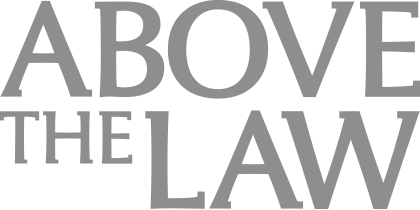Tempering the Excitement on the Sidley Bonuses
There’s no denying all the good news over at Sidley Austin. The firm just named 28 new partners, up from 15 last year. It recently snagged three leading litigators from Howrey: Gary Bendinger, who served as co-chair of litigation at Howrey, and two of his partners, Gregory Ballard and Kevin Burke.
And as we reported yesterday, Sidley paid out bonuses that made some of its associates very, very happy. Some associates received bonuses that were twice the Cravath scale.
But not all Sidley associates were quite this fortunate — and we have since heard from some of them. We also have the full Sidley memo.

AI Presents Both Opportunities And Risks For Lawyers. Are You Prepared?
A more balanced view of the Sidley Austin bonuses, plus the full memo, after the jump.
It’s my personal opinion that Elie overstated matters in the headline of yesterday’s post: Sidley Austin Pwns Cravath/DPW Associates. While some Sidley associates received bonuses that were much larger than the Cravath and Davis Polk bonuses, others received much smaller bonuses (e.g., Cravath level), and some received nothing at all. That’s the nature of bonuses in a non-lockstep, black-box system like Sidley’s.
The ecstatic tone of our earlier post reflected (1) the top-line statement in the memo that the total bonus pool “increased by more than 25% from last year” and (2) anecdotal reports from happy tipsters. We have since heard from less happy ones. Like this one:
Sponsored

AI Presents Both Opportunities And Risks For Lawyers. Are You Prepared?

Curbing Client And Talent Loss With Productivity Tech


Curbing Client And Talent Loss With Productivity Tech
My bonus this year was market…. The people who have been “thrilled” about their bonus probably exceeded their expected 2000 billable hour requirement by a good bit.
That’s certainly true. The sources we heard from who got twice the Cravath bonuses reported high billables, generally north of 2500. Our less-than-thrilled source continues:
I am satisfied with my bonus since I did not kill myself this year, but I think the post is a bit misleading given that most of the associates probably got market unless they have been very very busy.
Fair enough. Hence this second post, an attempt to provide a fuller and fairer portrait.
This source, who received a roughly “market” or Cravath-level bonus, is not alone. The Sidley bonus memo, reprinted below, refers to “[g]eneral eligibility criteria” that bonus recipients must meet. One needs about 2000 hours to be eligible for bonus consideration at Sidley. At Cravath or Davis Polk, you can get a standard lockstep bonus even below 2000 hours (although, to be sure, many CSM or DPW associates work well over 2000 hours — which raises the issue of whether, if you’re a workaholic, you might be better off at a non-lockstep firm).
Sponsored

Generative AI at Work: Boosting e-Discovery Efficiency for Corporate Legal Teams

Law Firm Business Development Is More Than Relationship Building
Our new Sidley source directed our attention to this observation in the comments (and expressed agreement with it):
Sidley has always told us that the bonuses are totally discretionary and are based on quality of work more than anything else. However, my experience has been it’s almost completely a matrix based on seniority and hours. It’s very similar to how Kirkland and Mayer Brown do it, the only differences are the values in each box of the matrix and whether you get much of a bump for exceptional reviews.
At Sidley, you have to get to 2000 to be eligible for anything, 2000 – 2100 or so gets you around market as set by everyone else, above 2100 does a little better every 50 or 100 hours with around 2400 – 2500 making around double market. However, there’s kind of a culture of secrecy about it and no one wants to really discuss it – kind of a Jones Day culture in that regard.
This strikes me as a more accurate synopsis of the Sidley system than any claim that Sidley somehow “demolished” Cravath. It would not be accurate — or so it seems to me, but please let me know if I’m wrong — to put Sidley in the same bonus tier as Cahill or Susman Godfrey, where even the least well-compensated associates seem to have made out quite well (or at least better than Cravath).
Another potential issue with yesterday’s Sidley post was Elie’s attempted math, as noted by many in the comments. I will not declare the math to be correct or incorrect, since it is my general preference as a writer to (1) avoid error by saying less and (2) not opine on matters that I don’t feel very confident about (e.g., math — I may be Asian, but my calculus days are long behind me).
(Suffice it to say that Elie takes a different approach to blogging — which is why I enjoy working with him, and why I think we complement each other as writers. He’s more funny and more provocative, even at the risk of being wrong, while I’m more careful, precise, and detail-oriented. You need both types of writers on a successful site. For more comparison of our blogging styles, see my comment on this morning’s Kaye Scholer thread.)
In sum, this year’s Sidley bonuses were good, and certainly better than last year. But to quote my esteemed colleague, “let’s not lick each other’s popsicles just yet.”
Here’s the Sidley memo.
SIDLEY AUSTIN — MEMORANDUM — U.S. ASSOCIATE BONUSES AND SALARY INCREASES
To: All U.S. Associates
From: The Management Committee
Re: U.S. Associate Bonuses and Salary Increases
Date: December 15, 2010
We are grateful for the dedication and performance of the associates of the Firm. Our partners are proud and appreciative of your efforts, which again have enabled us to provide our clients with the highest quality of professional service, and have contributed to the Firm’s vitality and achievements this year. We are pleased to be able to acknowledge your exceptional contributions with performance-based bonuses and salary increases.
The number of associates receiving a bonus has increased by nearly 20% over 2009, and the total bonuses being awarded has increased by more than 25% from last year. As is our custom, we have determined bonuses on an individual basis. Year-end bonuses continue to be discretionary and, where awarded, are tailored to each associate’s circumstances. General eligibility criteria remain the same as in past years. In establishing bonus amounts, we have given substantial weight to the quality of an associate’s work, which remains the most important factor in evaluating an associate’s performance and prospects for long-term success at the Firm. We also have considered the hours that each associate has spent on chargeable, pro bono, and certain non-chargeable matters, such as legal services and other special contributions to the Firm.
We also are pleased to announce our associate salary schedule for 2011.
Class Year – 2010 Salary
2010 – $160,000
2009 – $170,000
2008 – $185,000
2007 – $210,000
2006 – $230,000
2005 – $250,000
2004 – $265,000
2003 -$280,000
Associate salary increases will be made in accordance with this schedule by class year. Variations from the schedule will be made for some associates based upon performance or productivity. The general expectation is that those associates without performance issues and with more than 1,800 client-chargeable and LSTF hours (normalized for those on leave or on a reduced schedule during the review cycle) will receive the full class year increase. Follow-up communications will occur with those associates who will not receive a full class year increase.
On behalf of all of our partners, we thank you for your professionalism and dedication to making this Firm an exceptional place to practice law. Best wishes for the holidays and for the New Year.
Earlier: Sidley Austin Pwns Cravath/DPW Associates
Associate Bonus Watch 2010








